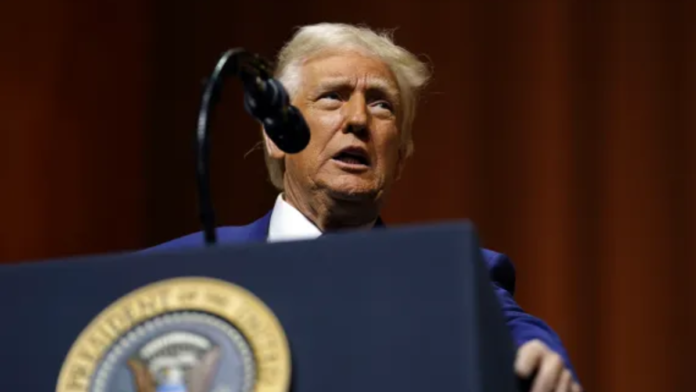All eyes are now glued to the moment when US President Donald Trump unveils the “massive tariff”. Last minute hectic behind the scene negotiations are underway and the trade circles are abuzz with options about what can India do to reduce the damage. According to international brokerage house Jefferies, one possibility is potentially using “defence & oil/gas imports from the US to soften the impact but some adverse impact for auto, pharma, textiles, alcohol.” They believe that “pressure to reduce agri import duties might impact politically in India while select consumer cos may benefit.”
ALSO READTrump tariff announcement soon: What are India’s options The big positives for India: Higher tariff rate, trade surplus
If one analyses WTO data for 2023, it shows that India’s trade weighted average tariff rate is 12% Vs 3-5% range for competing EMs (China, Mexico, Indonesia). This is also significantly higher than the 2.2% levied by the USA.
Additionally, India’s goods trade surplus with the US was $46 billion in 2024 (1.2% of GDP), according to calculation by Jefferies. With US, India’s top goods exports destination (18% share). India levies higher tariffs on some select segments –
–Cars (110%)
-Wines & Spirits 50-150%
-Agricultural Products (65% avg.)
-India’s software exports to US are also large ($103 bn in FY24 per RBI)
Jefferies on Trump tariff: India hopeful of a solution
Jefferies pointed out that its meeting with key representatives and govt officials indicate that they are “hopeful of avoiding high tariffs by the US.”
“Following the Modi-Trump meeting in Feb25, attempts are being made simultaneously to
a) Minimize damage from potential reciprocal tariffs through targeted tariff cuts in the near term
b)Pursue a simultaneous Bilateral Trade Agreement (BTA) with the US by late 2025,” the report stated
ALSO READTrump tariff to come into effect soon: Here’s what has unfolded till now and what can be expected Why is a Bilateral Trade agreement with US complicated?
That said, Jefferies pointed out that “a trade agreement with the US would likely include the high tariff items, which could be politically / economically sensitive for India.” These include agri commodities (corn, soyabean, milk products, wheat etc.), automobiles and pharmaceuticals. They added that “India will also need to balance the concessions offered to the US with similar deals to EU &
» Read More


